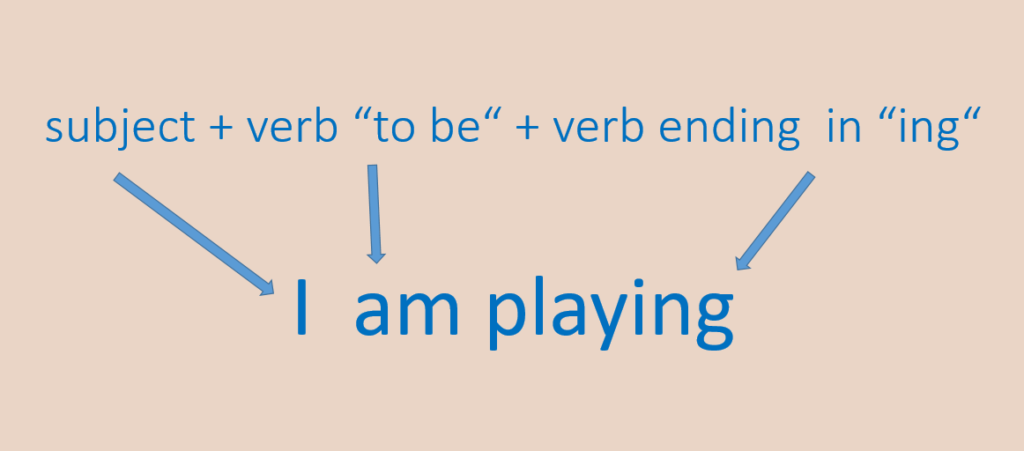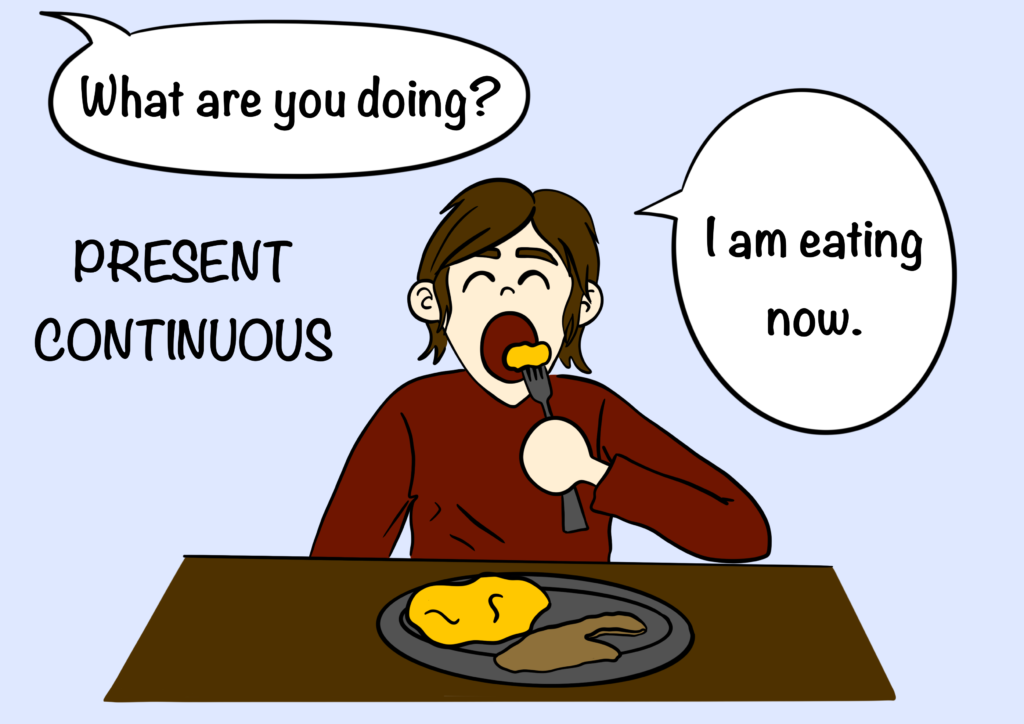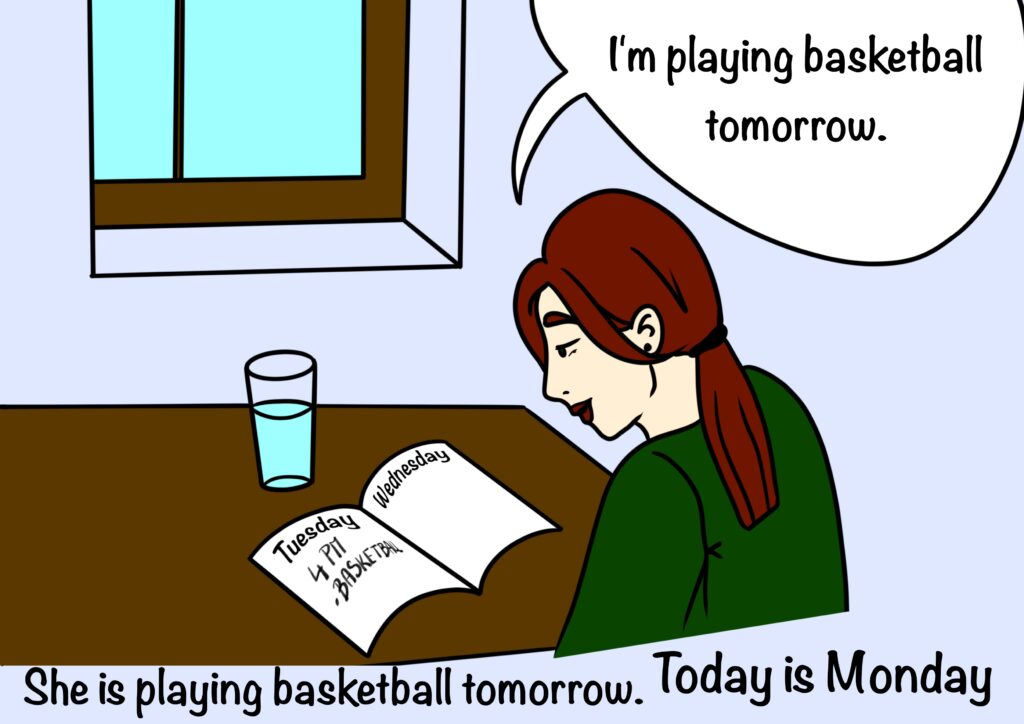The present continuous is used to show that an ongoing action is happening now. The present continuous is also used to talk about an action that is going to take place in the near future.
Forming the present continuous
The present continuous is composed of two parts – the present tense of the verb to be + the present participle of the main verb (the form of the present participle is: base + ing, e.g. driving, playing, moving, working, smiling).

| Affirmative | ||
| Subject | + to be | + base + ing |
| He | is | driving. |
| Negative | ||
| Subject | + to be + not | + base + ing |
| He | is not (isn’t) | driving. |
| Interrogative | ||
| to be | + subject | + base + ing |
| Is | he | driving? |
| Affirmative | Negative | Interrogative |
| I am driving to school. | I am not driving to school. | Am I driving to school? |
| You are driving to school. | You are not driving to school. | Are you driving to school? |
| He is driving to school. | He is not driving to school. | Is he driving to school? |
| We are driving to school. | We are not driving to school. | Are we driving to school? |
| You are driving to school. | You are not driving to school. | Are you driving to school? |
| They are driving to school. | They are not driving to school. | Are they driving to school? |
Contraction with Present Simple
When we use the Present Continuous tense in speaking and informal writing, we often contract affirmative and negative sentences like this:
| I’m working | I´m not working |
| You´re working | You aren’t working |
| He´s working | He isn’t working |
| She´s working | She isn’t working |
| It´s working | It isn’t working |
| Robert´s working | Robert isn’t working |
| We´re working | We aren’t working |
| They´re working | They aren’t working |
Using the Present Continuous
Use 1 Now

We use the present continuous to talk about things that are happening now, at this very moment.
Examples:
- Robin is swimming.
- He is learning English now.
- You are not driving now.
- Is she sleeping?
- I am not studying now.
- They are not reading.
- We are watching television.
- What are you doing? I am eating now.
- What is she doing? She is drawing at the moment.
- What is she doing? She is reading a book.



Use 2 Longer Actions that are in progress

We use Present continuous to talk about things that are happening in present, but not exactly at this exact second.
Examples:
- John is working as a cleaner until he finds a job in his field. (He is not cleaning now but he is a cleaner.)
- I am reading a great book about volcanos. (I am not reading the book now, but I have been reading this book in my free time this week.)
- Eliana is studying to become a teacher. (Eliana is not studying now but she has been attending university for three years.)
Use 3 Plans in the near future

Present continuous is also used to talk about plans in the near future.
Examples:
- I am meeting my boss for lunch tomorrow. (My boss called me today to ask me to have lunch with him and I agreed.)
- Len is not going to the pub with us on Saturday.
- Is she flying to Amsterdam next week? (Has she bought a ticket for next week?)
- I am playing basketball tomorrow.

Use 4 Expressing irritation

The present continuous is often used to express irritation. We can express irritation by using the words „always“ or „constantly“ in a sentence with present continuous.
Examples:
- She is always driving too fast!
- He is constantly disrupting the class.
- Susan is always complaining.
Non-Continuous Verbs / Mixed Verbs
It is important to note that non-continuous verbs and certain mixed verbs (for example to appear, to feel, to hear, to look etc.) cannot be used in continuous tenses. Instead of using present continuous with these verbs, present simple must be used.
Examples:
Not Correct He is loving this cheese sandwich.
Correct He loves this cheese sandwich.
Non-continuous verbs are verbs that are normally not used with continuous tenses. These verbs are used to talk about state, not action. Here are some of the most common non-continuous verbs:
hate, like, love, prefer, want, wish, involve, appear, feel, hear, see, seem, smell, sound, taste, agree, deny, disagree, mean, promise, satisfy, surprise, believe, imagine, know, mean, realize, recognize, remember, understand, be, belong, concern, depend, involve, matter, need, owe, own, possess etc.


